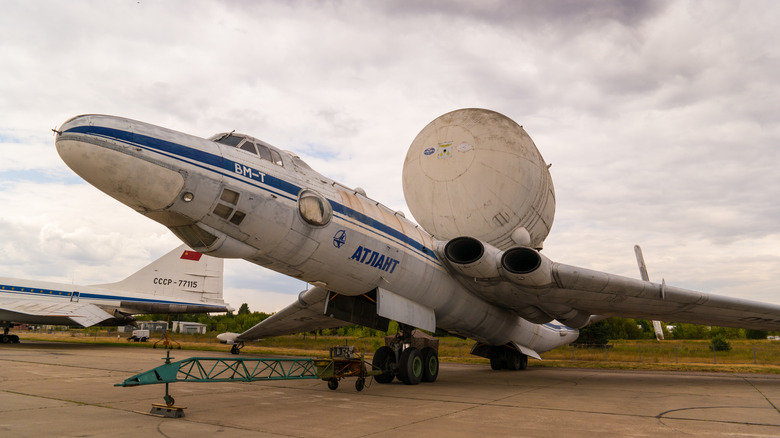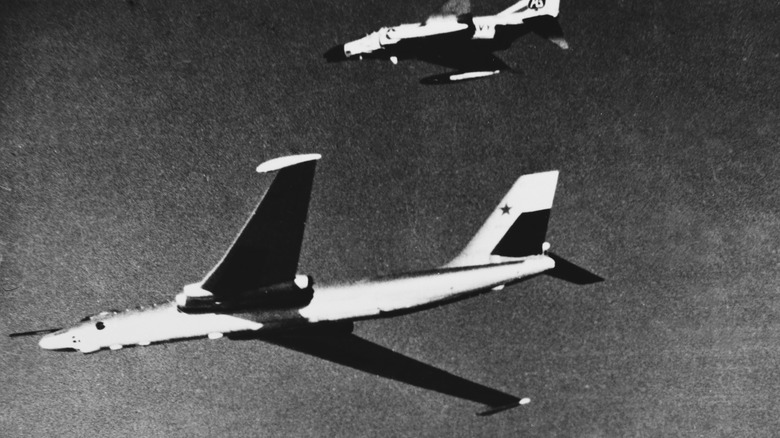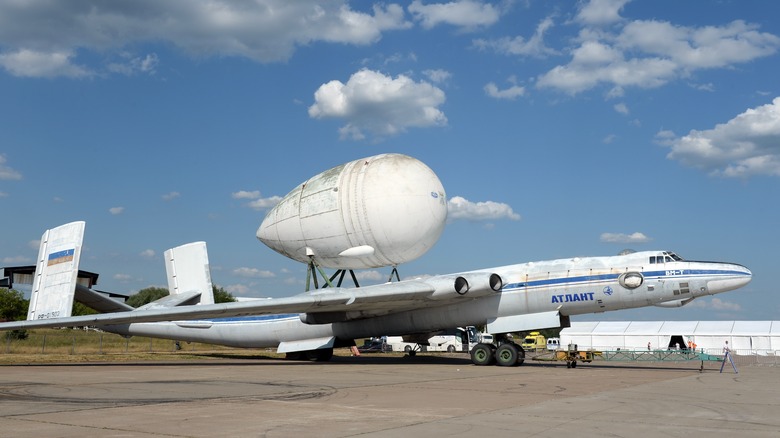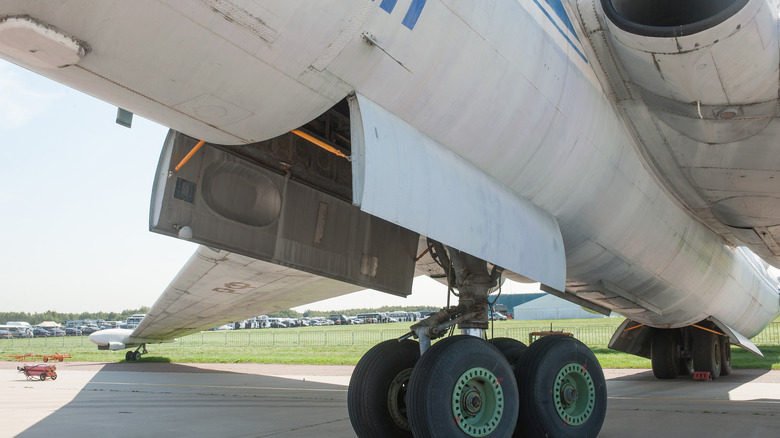How The Soviets Repurposed A Cold War Bomber For The Space Program
The Cold War, through necessity, was a time of rapid advancement in military aircraft technology. This makes perfect sense. Given the distance that was expected to have to be covered to engage in combat, should the worst happen and open warfare ensue, aircraft would have been key. As a result, the era produced some fantastic jets, including the MiG-21 and F-4 Phantom II.
One of the most intriguing Cold War planes, however, wasn't a fighter. It was a bomber. The Soviet Union's Myasishchev M-4 may be lesser-known than some of the aforementioned aircraft, but it would go on to have a very special trick up its sleeve.
Sometimes, a variant of a military aircraft only changes in a subtle way, with something like its interior configuration. In the case of the M-4, though, the Soviets tinkered with the bomber to give it a crucial role in their space program. This is the story of the original purpose and development of the bomber, and how it became a key player in the Soviet space machine.
The Myasishchev M-4: The bomber
A key weapon that the Soviet Union wanted in its arsenal during the Cold War was a rather obvious one: A bomber that had the range to threaten the United States and a payload to dispense considerable damage upon arrival. In the early 1950s, work on such a long-range strategic bomber began under Vladimir Mikhailovich Myasishchev.
In 1954, the M-4's development officially began. It was a bomber manufactured in limited quantity. Just 34 of the original model, the Bison-A, were built, and it was potent. Its range could reach 9,000 miles when refueled en route, and it boasted four Mikulin AM-3A turbojets. In terms of its weaponry, it included anything from FAB-100 GPs to FAB-9000s, the latter of which weighed almost 10 tons each. Lined with AM-23 23mms cannons, it was also ready to defend itself from attacks from other aircraft.
Another variant included the Bison-B, known as the 3M, which emerged near the end of the decade. It boasted more efficient Dobrynin VD-7B engines and reduced weight. Other concepts, such as a cargo transport variant dubbed the M-29, did not become reality, but the upgraded Bison-B would become much more than just an improved take on a bomber. It would become a transport after all, but for rocket parts.
Why was a Cold War bomber needed for the Soviet space program?
As a bomber, the 3M had some unfortunate limitations. It was impractical to attain the kind of range it would require for its primary (hypothetical) objective of pressuring the U.S. military. As has often been the case with technology, another aircraft being developed at the same time proved to be a more attractive option in some areas. This was the Tupolev Tu-95, a bomber powered by four turboprop Kuznetsovs. The Tu-95 is still fielded today for its efficiency over long distances and the potential size of its payload (approximately 22 tons).
The 3M, in light of these issues, would have a short life as a bomber. Around a decade after the project began, they stopped being developed. However, there was considerable potential in the aircraft elsewhere. The question was how to harness that potential by augmenting the aircrafts' bodies to better serve another role.
The answer was a fascinating one. As it so happened, the Soviets' endeavors in space faced considerable issues, and they were issues that an aircraft such as this could help mitigate nicely.
The VM-T Atlant: The Rocket Transporter
What the Soviets needed in the 1970s was a way to transport components of the Energia rocket and Buran orbiter. Air travel was deemed the most feasible solution to this conundrum, but the issue there was that the orbiter weighed in at a hefty 100 tons. Creating these components, needless to say, was technical, specialized, expensive work, and so the Soviet Union was strictly limited for places to do it. Just as strict was the location where they had to be transported: Kazakhstan's Baikonur Cosmodrome.
The Soviets' mighty Antonov AN-225 with a massive cargo capacity was created for this very purpose, but it wouldn't be ready until 1988. What was available, however, was a number of 3M bombers. Given the right modifications, of course.
These modifications included VD-7MD engines and a dramatic increase in cargo space. This work began in 1977, and resulted in a quintet of aircraft known as the VM-T Atlant family. Each was customized to carry a different part of the orbiter or rocket.
Having the cargo atop the aircraft was an inspired solution, and the aircraft made over 150 such trips to the Cosmodrome. Before the AN-225's arrival, the Soviet space program would surely have stalled without the 3M.



